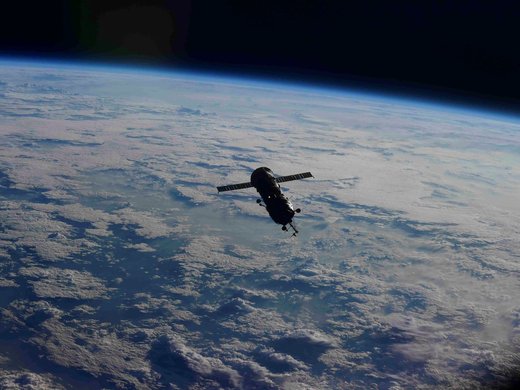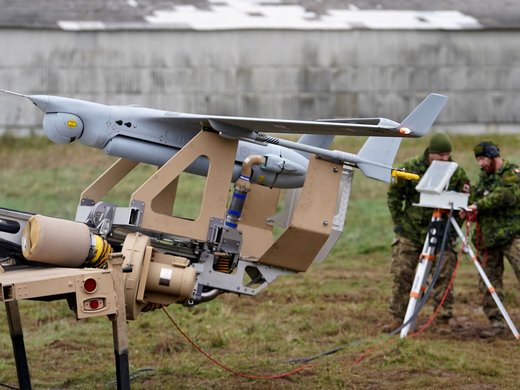The formulation and interpretation of international rules is not a neutral exercise. It is almost always informed by geopolitical strategy, and strong states will interpret existing rules, or influence the creation of new ones, in a manner that benefits their geostrategic interests. This is particularly challenging at present, given the scale and speed of expansion of activities in space and the glaring lack of congruence between the West and Russia and China. At best, the major space powers view one another with deep distrust and, at worst, with active malice. There is also a lack of consideration for what new actors could bring to the table to change the dynamics.
At present, there is an ongoing contest surrounding the rules that apply in outer space and those that will come to govern the conduct of both nations and an increasingly diverse set of space actors in the future. Indeed, some have even suggested that we are entering a new era marked by fundamental changes in almost everything about the way space is used, explored and exploited. This is “Space 4.0.”1
The term Space 4.0 has been used to describe the current era of space exploration as “a time when space is evolving from being the preserve of the governments of a few spacefaring nations to a situation in which there is the increased number of diverse space actors around the world, including the emergence of private companies, participation with academia, industry and citizens, digitalisation and global interaction.”2
The numbers easily make this case. As of January 1, 2022, there were 4,852 active satellites orbiting the Earth (Burgueño Salas 2022), with the majority of these being launched in the last two years.3
This sharp trend in the increasing number of active satellites is set to accelerate at an unprecedented pace. The current focus is on the provision of global broadband service using large constellations of small satellites. Known colloquially as “mega-constellations,” these commercial applications could lead to more than 50,000 to 100,000 additional satellites being launched by the end of the decade (Messier 2021).
There is something qualitatively and quantitatively different about space that is taking place at present. Yet almost all the international law that governs conduct in outer space was written in the 1960s and 1970s. We are in a new era, but our international governance remains largely the same.
This has led to uncertainty at the intersection of international space law and emerging technical capabilities and activities, most notably around cyber operations that originate in transit or terminate in outer space. This uncertainty is dangerous and must be urgently clarified, not only for the benefit of strategic stability and international security but also for the burgeoning commercial uses of space.
Given the limited number of states that possess the more advanced capabilities — and the relative ease of attributing attacks from things such as a direct-ascent anti-satellite (ASAT) missile — the practical reality is that cyber weapons will become increasingly likely tools in this contested domain. As space law continues to evolve, it will be necessary to analyze the relationship between legal standards and norms, coupled with the technical understanding of capabilities, hardware, software and astrophysics applicable to the space domain (North Atlantic Treaty Organization 2021). While policy makers and legal practitioners continue to rely on customary international law, substantive areas of space law remain underdeveloped.
The Applicable Rules of International Law
Space is no longer seen as a sanctuary4 where peaceful uses, the avoidance of conflict and freedom of movement were strategic objectives. Now, at best, it could be considered “congested, contested and competitive”5 and, at worst, a new war-fighting domain.6
This creates a crisp need for clarity on two related points. The first is the ongoing difficulty of being able to legally define a space weapon.7 The second is a lack of precision in the international law applicable to operations against space-based assets, especially when offensive cyber capabilities are used.
The public discourse surrounding space weapons was most recently brought into focus on November 15, 2021, when Russia tested a direct-ascent ASAT missile against one of its own defunct satellite targets. The resulting explosion created a substantial debris field in low-Earth orbit. In response, the United States recently introduced a commitment that it would not “conduct destructive, direct-ascent anti-satellite (ASAT) missile testing,” and that it would seek “to establish this as a new international norm for responsible behavior in space” (The White House 2022).
But is a missile fired from the ground a “space” weapon?
The Center for Strategic and International Studies recently released a report (the “CSIS Report”) that created a helpful categorization based on the domains from which a weapon originates and where the effects are realized. Based on this, there are:
- Earth-to-space weapons;
- space-to-space weapons; and
- space-to-Earth weapons. (Harrison 2020)
There is also a further categorization based on whether the weapons have either a kinetic or a non-kinetic effect. Here are some examples:
- kinetic Earth-to-space (a direct-ascent ASAT missile);
- non-kinetic Earth-to-space (a cyberattack);
- kinetic space-to-space (an ASAT missile launched from one satellite and aimed at another);
- non-kinetic space-to-space (a directed energy weapon, such as a high-energy microwave, based on a satellite platform and directed at another satellite);
- kinetic space-to-Earth (a space-based missile targeting an Earth-based installation); and
- non-kinetic space-to-Earth (a space-based laser targeting a ground target). (Ibid.)
According to the CSIS Report, several categories of these weapons have already been deployed in some fashion by nation-states: “This means that by many definitions space has already been weaponized” (ibid., iv). Or, at the very least, that space is sitting on the cusp of weaponization.
The UN Charter generally prohibits the threat or use of force, except in cases of individual or collective self-defence.
This difficulty in assessing what constitutes a space “weapon” is likely why the discussion within the international community to date has been focused on “effects” such as debris or destruction/disabling of a satellite. The focus is not whether something is defined as a weapon. Rather, it matters how the capability is used.
With this range of “weapons” or capabilities, it is clear that all elements of the space system are vulnerable to attacks, ranging from complex counterspace capabilities that could be used to disrupt, deny, degrade or destroy space systems, to basic cyberattack (Weeden and Samson 2022).
The starting point for determining the legal rules that apply is likely the Charter of the United Nations.8 The UN Charter generally prohibits the threat or use of force, except in cases of individual or collective self-defence. Explicitly, article 2(4) stipulates: “All members shall refrain in their international relations from the threat or use of force against the territorial integrity or political independence of any state, or in any other manner inconsistent with the Purposes of the United Nations.” Article 51 further provides a limited exception when an “armed attack occurs,” stating: “Nothing in the present Charter shall impair the inherent right of individual or collective self-defence if an armed attack occurs against a Member of the United Nations.”
Outer space presents unique challenges in identifying prohibited uses of force. The obscurity of the application within existing international law surrounding the threat, or actual use, of force is made clear by the joint Russian-Chinese Draft Treaty on the Prevention of the Placement of Weapons in Outer Space, the Threat or Use of Force against Outer Space Objects.9 Article II stipulates that states parties shall not “resort to the threat or use of force against outer space objects” of states parties. If article 2(4) of the UN Charter was clearly applicable, then this additional mechanism would be both redundant and unnecessary.
While international law might be unclear, it is crystal clear that the effects of directly targeting a space asset could be calamitous. It could create lasting damage to the space environment and increase geopolitical rivalry and tensions in other domains.
The governance challenges are also compounded by the fact that the consequences of a cyberattack on space infrastructure could be anything from temporary disruption to complete mission failure. This is especially true given that article 41 of the UN Charter states that “the Security Council may decide what measures not involving the use of armed force [emphasis added] are to be employed to give effect to its decisions….These may include complete or partial interruption of…telegraphic, radio, and other means of communication.”
In other words, in article 41, the UN Charter makes clear that the complete or partial interruption of communication signals is not a use of force. So, are cyberattacks that completely cut off communications with satellites a use of force? The lack of an easy answer to this question and relative ease with which such attacks can be perpetrated by a wide pool of capable adversaries — from simple hackers to sophisticated state actors — should give policy makers pause.
Most of the law that governs outer space was written in the 1960s and the 1970s. So, our tech has changed, the environment has changed, the stakeholders have changed, but our governance remains the same, says @shull_aaron.
— CIGI (@CIGIonline) February 4, 2023
Learn more in our essay series: https://t.co/AsadnLYcJ7 pic.twitter.com/QfU8iPueJC
Efforts Under Way to Clarify Rules
It is worth mentioning, however, that there have been significant efforts to advance the understanding of applicability of international law to novel scenarios, with the leading authorities on the subject likely to be the Tallinn Manual on the International Law Applicable to Cyber Warfare, the Woomera Manual on the International Law of Military Space Operations and the McGill Manual on International Law Applicable to Military Uses of Outer Space.
For its part, the McGill Manual is circumspect on this point. The totality of what the manual says on cyber activities appears in Rule 112, which states: “Cyber activities that constitute space activities, including military space activities, are governed by international space law, as well as the applicable rules of general international law” (Jakhu and Freeland 2022, 11).
By way of contrast, the Woomera Manual is extending its analysis to include consideration of the laws of armed conflict; it has not been published, so the contribution that it will make to the field is unclear.10 The project’s experts situate these efforts as a linear progression on the success of the San Remo Manual on International Law Applicable to Armed Conflicts at Sea, the HPCR Manual on International Law Applicable to Air and Missile Warfare, and the Tallinn Manual.
The most detailed analysis comes from the Tallinn Manual.11 In this manual, there is a chapter related to space law. The Tallinn Manual includes Rule 58(b): “Cyber operations in outer space are subject to international law limitations on the use of force” (Schmitt 2017, 273). In articulating this rule, the Tallinn Manual considers article III of the Outer Space Treaty, which states that “activities in the exploration and use of outer space [shall be carried out] in accordance with international law, including the Charter of the United Nations, in the interest of maintaining international peace and security.” For the experts drafting the manual, the reference to the UN Charter confirms that article 2(4)’s prohibition of the threat or use of force “applies fully to activities in outer space. Accordingly, any cyber operation that originates in, transits, or terminates in outer space and rises to the level of an unlawful threat or use of force is barred” (Schmitt 2017, 274).
Despite concluding that there is broad applicability on the prohibition of the use of force, the manual was careful to note that “each case has to be evaluated on its own merits” (ibid.).
More recently, an official process has also been undertaken: the United Nations General Assembly adopted resolution 76/231 late in 2021, which created an open-ended working group (OEWG) on reducing space threats through norms, rules and principles of responsible behaviours.12 The first session was held in May and the second in September 2022. Despite the short span of work thus far, two broad statements offered by various states to the working group make clear just how much work there will be if there is ever to be a consensus on the rules of the (space) road.
Common interpretation of basic principles of international space law remains lacking. As an example, Australia noted that it was interested in states’ views on how the obligation to conduct space activities with “due regard” for the interests of other states would apply to the use of electromagnetic pulses, high-powered lasers, high-powered microwaves and cyber capabilities.13
Other obstacles are the conflicting perceptions and priorities of space threats. Perhaps most telling is the contrast between the statements of China and the United States. In its statements, China notes that the root cause of an arms race is the United States and its attempts to dominate outer space. This, China says, is “a sword of Damocles long hanging over outer space.”14 For its part, the United States has been leading the development of an international moratorium on the destructive testing of ASAT missiles, joined by states such as Canada, Germany and New Zealand. The lack of a prohibition means that at present, states cannot even agree to not blow things up in outer space, which can create massive and devastating debris fields, although there is at least growing support for a ban among a number of like-minded countries including Canada, Germany, Japan, New Zealand, South Korea, the United Kingdom and the United States.
There are a wide number of cyber operations that could be directed against satellites. As the Tallinn Manual has noted, these could include disrupting communications, intercepting or altering data flowing to and from the satellite, impeding uplink or downlink location signals, partially or completely destroying the software or hardware on a space system, or even manipulating satellite controls. But such threats have received scant attention from the OEWG, while China has denied that they are relevant to the discussion at all.
Although this new international rulemaking process is just getting started, it is already roiled by geopolitical tension, and the application of existing international law to unique factual and technical scenarios is doctrinally unclear.
Conclusion
The inability to form and interpret clear international rules comes at a time when estimates have the world moving from 4,852 active satellites to 100,000 active satellites in the next eight years. This clear and unmistakable trend toward a fundamentally different approach to the use of space begs for international cooperation and coordination. However, the world is at — likely — the most challenging time for this type of cooperation since the end of the Cold War.
Despite efforts aimed at clarification of the applicable legal rules, this area of law remains underdeveloped, requiring resort to imperfect analogous areas of law. This is particularly troubling because we are likely entering a rapid escalatory cycle. While significant ambiguity remains related to the application of international law to cyber operations against satellites, it is now crystal clear that space will form part of the fabric of the diplomatic and geopolitical landscape and is no longer the benign peaceful forum for international collaboration it once was, symbolized by the International Space Station. In other words, space is no longer above the geopolitical fray.
The questions surrounding the application of international law are not academic. A frightening example illustrates the point: Shortly after the Russian invasion of Ukraine, it was reported that Dmitry Rogozin, the head of Russia’s federal space agency, said, “Russia will treat any hacking of its satellites as a justification for war” (Reuters 2022).
Given the wide range of activities that could constitute the “hacking” of a satellite, clearly not “any hacking” of a state’s satellites constitutes a justification for war. Or, more particularly, clearly not all use of cyber capabilities against a satellite constitutes either a prohibited use of force under article 2(4) or an armed attack giving rise to the right of self-defence under article 51 of the UN Charter. But, that opacity of the existing rule structure, and the Tallinn Manual’s rightful caution that each case must be evaluated on its own merits, means that determining the line will be fact-specific and subjective.
The resort to the use of force is one of the most tightly prohibited acts in international relations — for good reason. Rogozin’s cavalier statement demonstrates the urgent need of the international community to know how the growth of harmful uses of cyber operations that originate in, transit or terminate in outer space fit into existing international law.



























